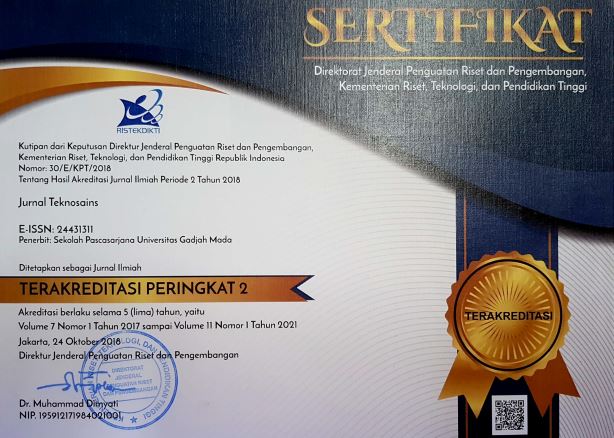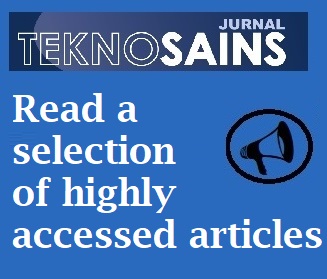Structural performance of 1 way and 2 way setback with the soft first story using ddbd
Anis Rosyidah(1*), Indriyana Luthfiyanti(2)
(1) Department of Civil Engineering, Politeknik Negeri Jakarta
(2) Department of Civil Engineering, Politeknik Negeri Jakarta
(*) Corresponding Author
Abstract
Irregular building structures increasingly varied, such as setback buildings and buildings with soft level stiffness irregularity on the first floor of the building (soft first story). High-rise buildings are at risk of collapse due to earthquakes. Designing efficiency requires a Direct Displacement Based Design (DDBD) method. In this study, the DDBD method uses pushover analysis on soft first-story buildings without a setback,1-way setback, and 2-way setback. This study aims to obtain the value software's value of displacement, story drift, ductility, plastic hinge response, and performance levels study indicates that the displacement value of the soft first-story building without setback is smaller than the setback building. In addition, the value of displacement and story drift in the setback building with a soft first story is influenced by the small setback area ratio. The highest displacement and story drift values in the X direction are 1-way setback buildings, which are 0.422 m and 0.0147 m, while in the Y-direction, the 2-way setback buildings are 0.44 m and 0.0167 m. The most significant value of actual ductility is a building without setbacks with a soft first-story. The plastic hinge response in all three buildings shows a strong column weak beam. The level of structural performance in all three buildings is at the level of Immediate Occupancy, where the value of the performance level of the FEMA 356 method is greater than the ATC 40 method.
Keywords
Full Text:
PDFReferences
[1] R. Efrida, ‘Pengaruh Setback Pada Bangunan Dengan Soft Story Terhadap Kinerja Struktur Akibat Beban Gempa’, Educational Building, vol. 4, no. 1, pp. 62–68, 2018, doi: 10.24114/eb.v4i1.10046.
[2] S. E. Naveen, N. M. Abraham, and A. S. D. Kumari, ‘Analysis of irregular structures under earthquake loads’, Procedia Structural Integrity, vol. 14, no. 2018, pp. 806–819, 2019, doi: 10.1016/j.prostr.2019.07.059.
[3] T. A. Putera and F. Hidayat, ‘Analisa Perbandingan Simpangan Struktur Gedung Set Back Tanpa Dinding Geser Dan Pemodelan Letak Dinding Geser Di Zona Gempa Tinggi’, Portal : Jurnal Teknik Sipil, vol. 9, no. 1, pp. 9–17, 2018, doi: 10.30811/portal.v9i1.611.
[4] A. G. El-Attar, A. Lzaghw, and A. A. Elansary, ‘Comparison between force based and direct displacement based design for R.C frame structures’, 2012.
[5] A. D. Puspita and A. Rosyidah, ‘Force Based Design And Direct Displacement Based Design For Dual System Structure’, Logic : Jurnal Rancang Bangun dan Teknologi, vol. 19, no. 3, pp. 162–168, 2019, doi: http://dx.doi.org/10.31940/logic.v19i3.1454.
[6] I. Muljati, F. Asisi, and K. Willyanto, ‘Performance of force based design versus direct displacement based design in predicting seismic demands of regular concrete special moment resisting frames’, Procedia Engineering, vol. 125, pp. 1050–1056, 2015, doi: 10.1016/j.proeng.2015.11.161.
[7] O. Kumbhar, R. Kumar, P. L. Panaiyappan, and E. Noroozinejad Farsangi, ‘Direct displacement based design of reinforced concrete elevated water tanks frame staging’, International Journal of Engineering, Transactions A: Basics, vol. 32, no. 10, pp. 1395–1406, 2019, doi: 10.5829/ije.2019.32.10a.09.
[8] M. J. . Priestley, G. . Calvi, and M. . Kowalsky, Displacement-Based Seismic Design of Structures, vol. 24, no. 2. 2008.
[9] S. M. Glorie, V. Luis, I. Muljati, and P. Pudjisuryadi, ‘Evaluasi Kinerja Metode Direct Displacement Based Design Dan Force Based Design Pada Bangunan Vertical Setback 6 Lantai’, Jurnal Dimensi Pratama Teknik Sipil, vol. 2, no. 2, pp. 1–8, 2014.
[10] K. Peter and M. Badoux, ‘Application of the Capacity Spectrum Method to R . C . Buildings With Bearing Walls’, 12h World Conference on Earthquake Engineering., pp. 1–8, 1998.
[11] ATC-40, ‘40, Seismic evaluation and retrofit of concrete buildings’, Applied Technology Council, vol. 1, p. 334, 1996.
[12] FEMA 356, ‘Prestandard and Commentary for the Seismic Rehabilitation of Buildings’, no. 1. p. 518, 2000.
[13] 2019 SNI 1726, ‘perkembangan ilmu pengetahuan dan teknologi , pemeliharaan dan penilaian kelayakan dan bangunan gedung dan nongedung sebagai revisi struktur bangunan gedung dan nongedung ; ( Lembaran Negara Republik Indonesia Tahun’, no. 8, 2019.
[14] P. H. Karisoh, S. O. Dapas, and R. Pandaleke, ‘Perencanaan Struktur Gedung Beton Bertulang dengan Sistem Rangka Pemikul Momen Khusus (SRPMK) dan Sistem Rangka Pemikul Momen Menengah (SRPMM)’, Jurnal Sipil Statik, 2018.
[15] Y. Muntafi, ‘Evaluasi Kinerja Bangunan Gedung DPU Wilayah Kabupaten Wonogiri dengan Analisis Pushover’, Simposium Nasional RAPI XI FT UMS 2012, pp. 68–75, 2012.
[16] R. Efrida, ‘Pengaruh Setback Pada Bangunan Dengan Soft Story Terhadap Kinerja Struktur Akibat Beban Gempa’, Jurnal Pendidikan Teknik Bangunan dan Sipil vol. 4, no. 1, pp. 62–68, 2018, doi: 10.24114/eb.v4i1.10046.
[17] S. Salawdeh and J. Goggins, ‘Direct displacement based seismic design for single storey steel concentrically braced frames’, Earthquakes and Structures, vol. 10, no. 5, pp. 1125–1141, 2016, doi: 10.12989/eas.2016.10.5.1125.
[18] Tavio and U. Wijaya, Desain Rekayasa Gempa Berbasis Kinerja Edisi Kedua (Performance Based Design), Edisi Kedu. Yogyakarta: C.V Andi Offset, 2018.
[19] A. K. Chopra, R. K. Goel, and C. Chintanapakdee, ‘Statistics of Single-Degree-of-Freedom Estimate of Displacement for Pushover Analysis of Buildings’, Journal of Structural Engineering, vol. 129, no. 4, pp. 459–469, 2003, doi: 10.1061/(asce)0733-9445(2003)129:4(459).
[20] H. Yurizka and A. Rosyidah, ‘The Performance of Irregular Building Structures Using Pushover Analysis’, Logic : Jurnal Rancang Bangun dan Teknologi, vol. 20, no. 2, pp. 65–72, 2020, doi: http://dx.doi.org/10.31940/logic.v20i2.1456.
[21] T. E. F. Tumbal, R. S. Widah, and M. R. I. A. . Mondoringin, ‘Pengaruh Set-Back Pada Tingkat Teratas Bangunan Bertingkat Akibat Gempa’, Jurnal Sipil Statik, vol. 7, no. 6, pp. 615–626, 2019.
[22] Y. Immanuel Mamesah, ‘Pengaruh Dinding Pada Lantai Dasar Terhadap Displacement Pada Bangunan Set-Back Dan Non Set-Back’, Jurnal Sipil Statik, vol. 7, no. 8, pp. 1007–1014, 2019.
[23] C. Utomo, R. I. Susanto, and D. I. S. Tujono, ‘Evaluasi Struktur dengan Pushover Analysis pada Gedung Kalibata Residences Jakarta’, Jurnal Karya Teknik Sipil, vol. 1, no. 1, pp. 1-10.
[24] Y. Tajunnisa, M. Chadaffi, and V. Ramadhaniawan, ‘Perbandingan Evaluasi Kinerja Bangunan Gedung Tahan Gempa antara Metode SRPMM dan SRPMK’, J. Apl. Tek. Sipil, vol. 12, no. 1, p. 1, 2014, doi: 10.12962/j12345678.v12i1.2581.
[25] Y. A. Pranata and P. K. Wijaya, ‘Kajian Daktilitas Struktur Gedung Beton Bertulang Dengan Analisis Riwayat Waktu Dan Analisis Beban Dorong’, Jurnal Teknik Sipil, vol. 8, no. 3, pp. 250–263, 2008.
[26] P. D. S. Pamenia, ‘Analisa Pengaruh Variasi Kekakuan Balok dan Kolom pada PRMK terhadap Daktilitas dengan Metode Pushover Analysis’, Institut Teknologi Sepuluh November. Surabaya, 2006.
[27] F. S. Anggriawan and A. Rosyidah, ‘Kinerja Struktur Bangunan Dengan Floating Columns Terhadap Beban Gempa’, Potensi, vol. 22, no. 1, pp. 96–103, 2020, doi: https://doi.org/10.35313/potensi.v22i1.1703.
[28] N. Ramadhani A.P. and A. Rosyidah, ‘Direct Displacement Based Design and Capacity Spectrum Method for Special Moment Resisting Frame’, Logic : Jurnal Rancang Bangun dan Teknologi., vol. 20, no. 1, pp. 6–12, Mar. 2020, doi: 10.31940/logic.v20i1.1455.
[29] Sudarman, H. Manalip, R. S. Windah, and S. O. Dapas, ‘Analisis Pushover Pada Struktur Gedung Bertingkat’, Jurnal Sipil Statik, vol. 2, no. 4, pp. 201–213, 2014.
Article Metrics
Refbacks
- There are currently no refbacks.
Copyright (c) 2022 Anis Rosyidah, Indriyana Luthfiyanti

This work is licensed under a Creative Commons Attribution-ShareAlike 4.0 International License.
Copyright © 2024 Jurnal Teknosains Submit an Article Tracking Your Submission
Editorial Policies Publishing System Copyright Notice Site Map Journal History Visitor Statistics Abstracting & Indexing









